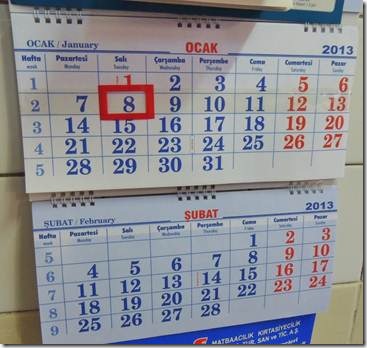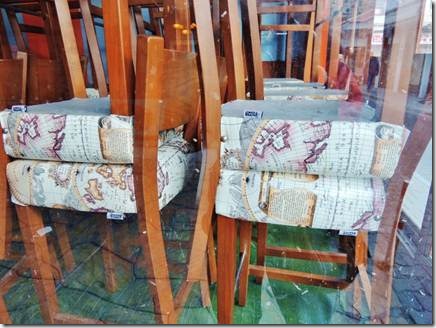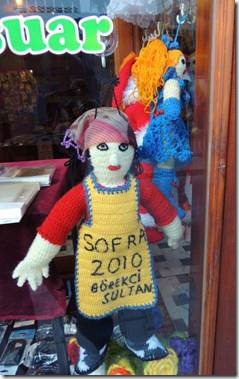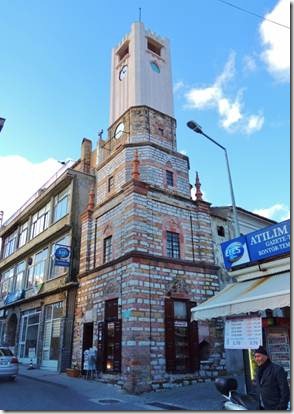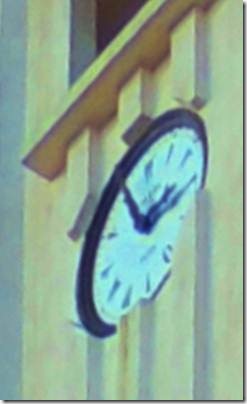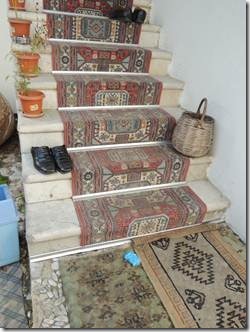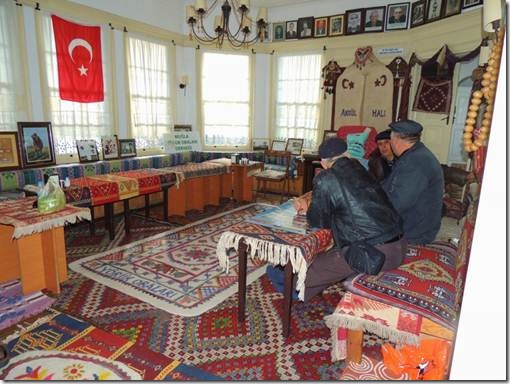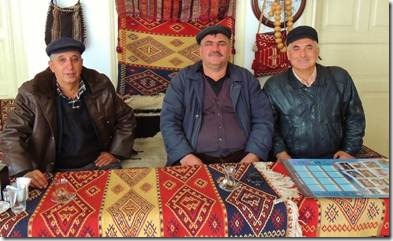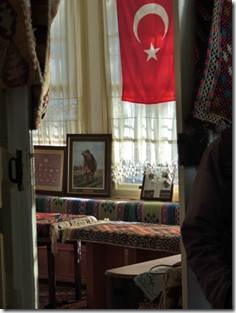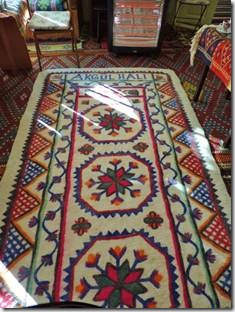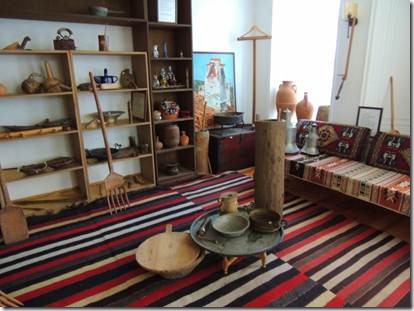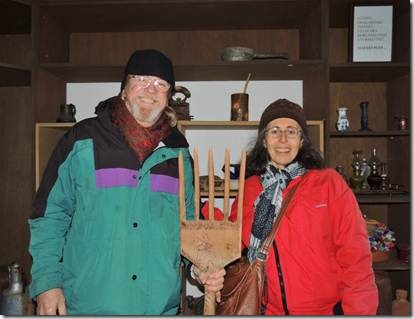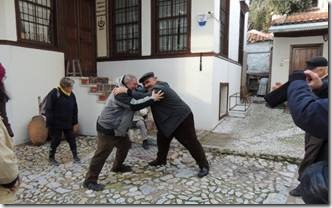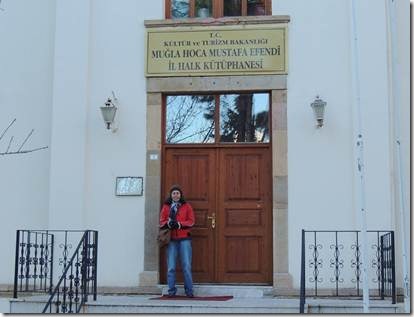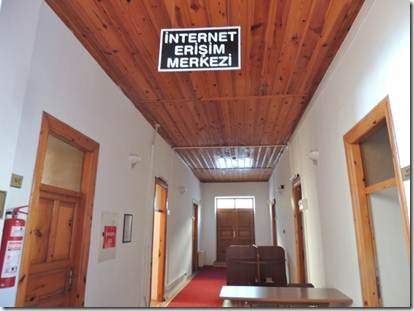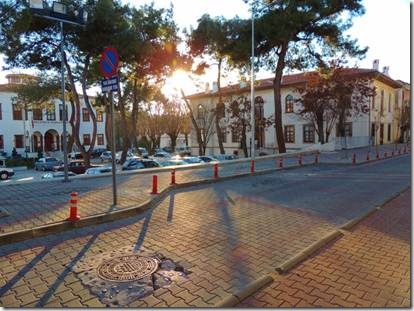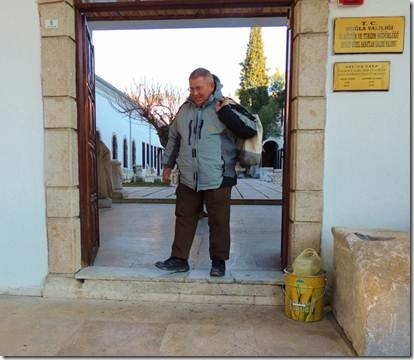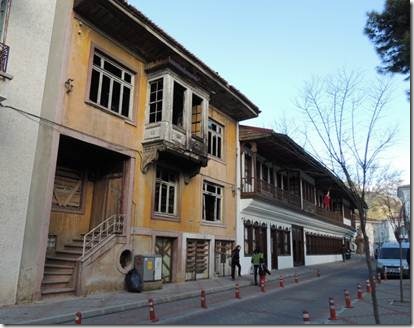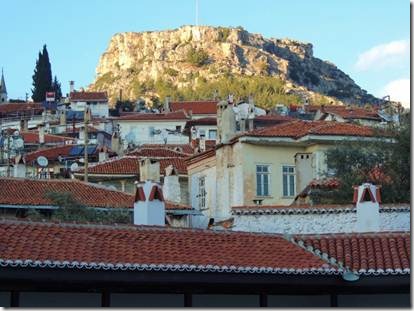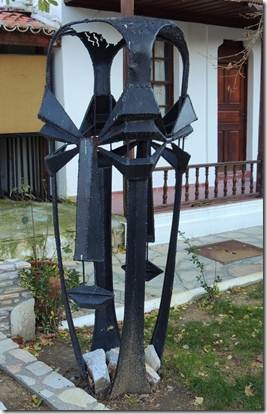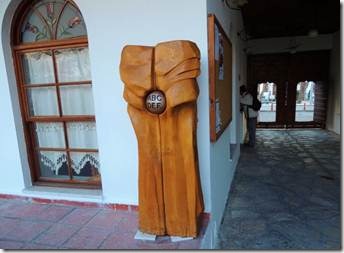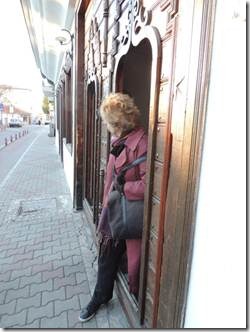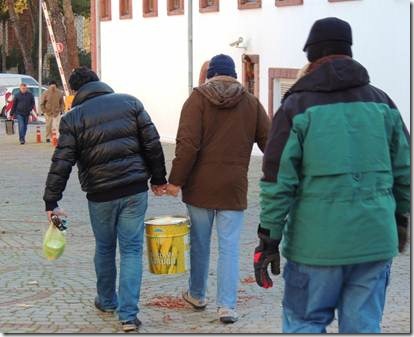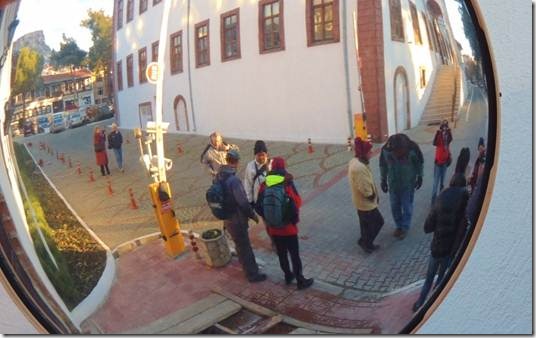Bright sunny Monday January 14, 2013
Merhaba,
So this is the last installment of our adventures in Stratonikeia and Muḡla. I crammed in lots of photos to avoid a part 4. For those of you concerned about my not having warm clothing, we’re usually okay. Everyone, no matter how warmly dressed was commenting on how cold they were. We just didn’t believe that the temperature an hour from Marmaris would be that much colder so didn’t pile on the layers. I should have worn Randal’s old ski pants over my jeans that I wear when we motorbike in cold weather. Next time!
Ru
This photo is from the calendar in the Helvaci Tashin shop in Muḡla where we bought our lifetime supply of corn syrup. I do know the days of the week. I know some numbers, but some I need to count through them all to get to the correct one in my head. And I know some months.
|
Calendar in the halva shop. Today in Turkish lessons we learned the different months and how to say 2013 in Turkish ikibinonὒҫ Iki = 2 bin=1,000 on=ten ὒҫ=3 on dὂrt Ocak ikibinonὒҫ = 14 January 2013. You can see from the calendar we visited the halva shop in Muḡla sekiz Ocak ikibinonὒҫ 8 January 2013. Got that? |
|
We left the halva shop on our way to the Hacıkadı Evi (House of Hacıkadı) and passed a restaurant where the chairs were upholstered with material printed to look like maps which totally caught my attention. |
|
Map chairs |
|
Crocheted or knitted dolls…I can’t tell but liked her quite a bit. Sofra translates to dining table and bὂrek is a pastry filled with cheese, rolled up and then fried. Sultan means sultan. Ci added to bὂrek means the profession of bὂrek maker. So I’m guessing that the apron says something about the “sultan of borek making” though I don’t know if Sofra is a restaurant or a person and I’ve no clue about 2010 other than related to a year. |
|
Clock Tower and the Hacıkadı Evi “Not far away, on the same street as the Cultural Centre, you will find the Hacıkadı Evi, an excellent example of local domestic architecture and open to the public. The first mayor of Muğla Hacıkadızade Süleyman Efendi had the house built in the 1870s for his son, Ömer Efendi. It’s a lovely two-storied structure set in a private garden, designed so that it looks more like a bungalow with an overhanging roof rather than the more usual sturdy style of two-storey townhouse. The heart of the house is a lovely, brightly lit polygonal hall on the first floor with bench seats lined up under the huge windows so that the women of the family could have a constant view of the garden. Bedrooms and other family rooms open off the back of the hall while more utilitarian rooms such as the kitchen were accessed via steps down from the garden. Later a small hamam was added to the side of the house, accessible via the servants’ quarters. Today all the rooms have been refitted with typical period furniture, and an array of family belongings and photographs fill the space as if the owners had just popped out of the house for a picnic. A little further along the same street a road junction is dominated by an Ottoman clocktower dating back to 1895. This could easily win a booby prize for ugliness; it looks rather as if the architect (one Filivarı Usta) had bodged it together with a collection of materials left over from other jobs. The tower was a gift to the town from Hacıkadızade Süleyman Efendi and is worth a look if only because it retains an orginal clockface with Arabic rather than Roman numerals.” http://www.turkeyfromtheinside.com/index.php?option=com_content&view=article&id=578:mula&catid=42:places-to-go |
|
Clock face isn’t clear but maybe you can get the idea. It certainly isn’t so attractive now, especially compared to other clock towers like the one in Jaffa. But when this was built there weren’t any blue Efes signs or other adverts so perhaps the tower looked better. |
|
You must remove your shoes before entering which is a lovely custom except when you have shoes that tie and the ground is cold! But there were carpets on the marble stairs. |
|
Hacıkadı Evi interior. |
|
These men were more than happy to pose for their photo. |
|
If you saw a giant wooden fork and couldn’t read the “Don’t Touch Please” sign, what would you do? |
|
Muḡla Gothic |
|
Ed and his new Turkish pal wrestling…I have no idea how or why this came about; I just took the photo. I do know it was all in fun. |
|
I absolutely can translate the words Halk Kὒtὒphanesi which means Public Library…so I had to go in and visit after making a whirl wind tour of the Muḡla Museum across the way. |
|
Internet Access Center…I can read that too |
|
I took this photo before I went upstairs to the main part of the library. There were staff upstairs ..and books…and magazines..and and and… I was told photos weren’t allowed. I explained that I worked in a public library in America so I was taken downstairs to meet other staff. We discussed privacy and also what it’s like fitting the functions of a library into a building that was originally a police station. The museum across the way was originally a prison! Though my Turkish is less than minimal and the man I spoke with had “some” English, the language of libraries is universal so we had a lovely conversation. It certainly makes me appreciate our brand new beautiful Roanoke County South County Library. |
|
The Public Library on the right. Facing it across the parking lot is the Muḡla Museum. |
|
The Entrance/Exit Muḡla Museum….that’s our friend Ed and that’s our gallons of corn syrup which the Halvah shop had kindly delivered to the museum for us to collect. |
|
Then it as off to the Culture Center |
|
I think I read that the yellow home is more Greek in design but the white and brown building, the Culture Center is Ottoman. The yellow building has not been restored. |
|
Standing in the Culture Center courtyard looking up at the hill behind town where once there was a castle, but no more. |
|
Artwork in the courtyard: and notice the double doors to the right of the wood scupture. |
|
Gwen exiting through the “lambs doors.” |
|
Facing the museum is the Konakaltı İskender Alper Cultural Centre, housed in a wonderfully stretched-out wooden building where you can start to hone a taste for the particular characteristics of local architecture. In particular you should inspect the huge double gates which used to swing open to admit carts. Set into these are a pair of much smaller doors called kuzulu kapılar (lamb doors) even though they were intended for people. The tops of these doors have delightful intricately carved topknots reminiscent of stone carvings found in English Gothic churches of the Decorated period. It’s a style you’ll find replicated throughout Muğla as well as in nearby Milas. http://www.turkeyfromtheinside.com/index.php?option=com_content&view=article&id=578:mula&catid=42:places-to-go |
|
Taz, our guide and Rick, our friend helping carry the corn syrup to our bus and our journey back to Marmaris. |
|
Losing your mind and buying 5 gallons of corn syrup to make pecan pie when you have no source of pecans is one thing. Losing your head altogether is another! Can you find headless Randal? H’es wearing a green and black jacket and standing on the right side of the photo. |
|
The End |

